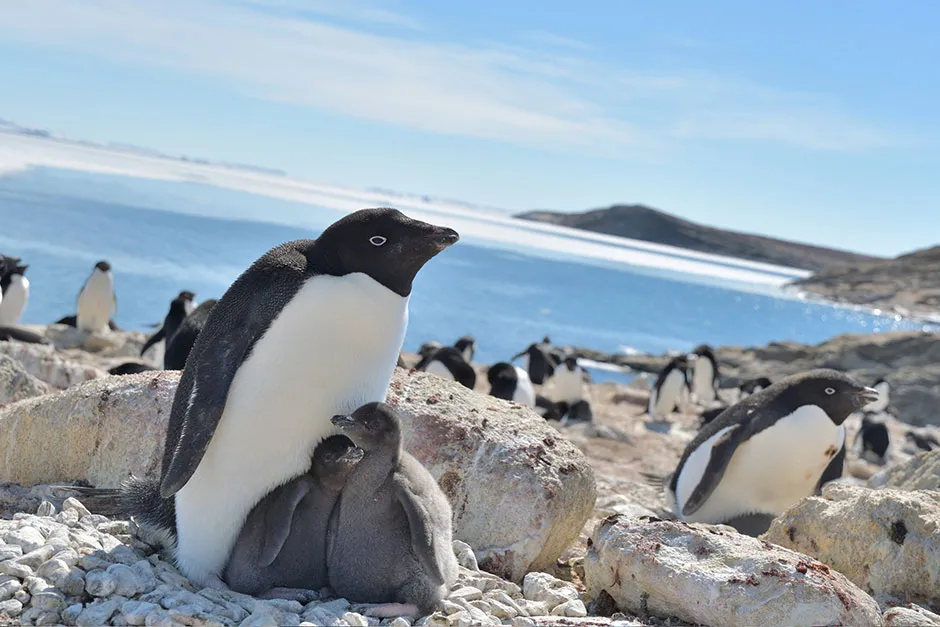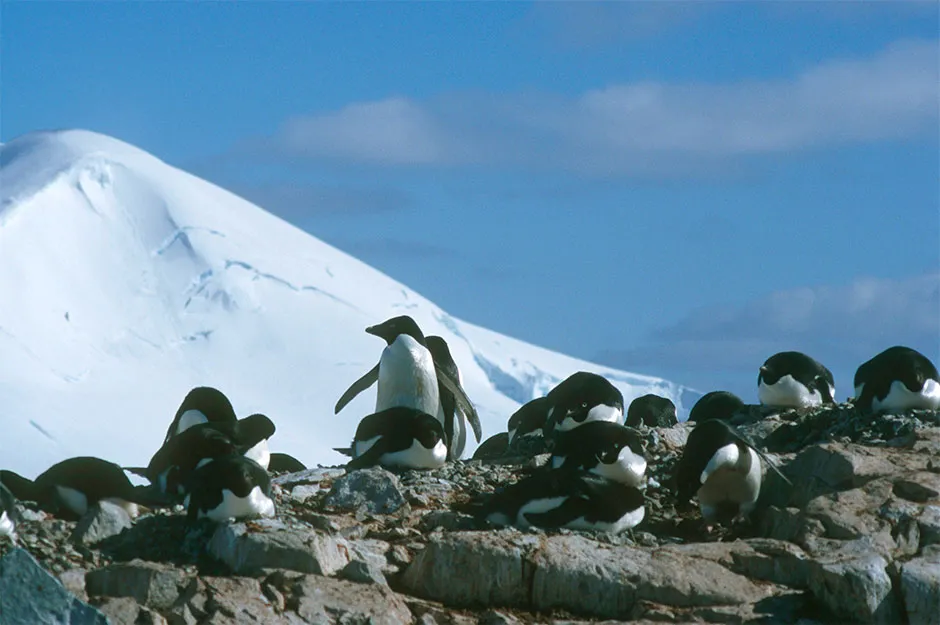Adelie penguins – the most common species of penguin in Antarctica – are happier when there is less sea ice, researchers say.
The animals enjoy more favourable foraging conditions during unusual ice-free conditions, a new study suggests.In ice-free conditions, the flightless birds are able to travel more by swimming, than by walking, and access food more easily.
“For penguins, swimming is a whopping four times faster than walking,” lead researcher Yuuki Watanabe at the National Institute of Polar Research said.“They may be sleek in the water but are pretty slow waddlers overland.”
Read more about penguins:
- Penguins help researchers identify the most vulnerable areas of the Antarctic
- Warming oceans drive almost 60 per cent drop in chinstrap penguin population
- Penguin speech follows human language rules
In recent decades, Antarctica has experienced a steady increase in the extent of its sea ice, even as the Arctic has suffered through a marked decrease, researchers say. But this is not expected to last much longer, thanks to climate change, with Antarctica also projected to see a decline in its sea ice.
Polar biologists have known for some time that Adelie penguins tend to see population increases during years of sparse sea ice and suffer massive breeding failures in the years with the greatest growth of sea ice.But until now, researchers did not really know why.
Researchers with Japan’s National Institute of Polar Research electronically tagged 175 penguins with GPS devices, accelerometers and video cameras across four seasons with different sea ice conditions.This allowed them to track penguins on their trips, categorise walking, swimming and resting behaviour, and estimate the amount of prey captured during dives.

The study published in Science Advances covered the breeding seasons in 2010/11, 2011/12, 2012/13 and 2016/17.
The researchers found that the penguins may have expended an average of 15 per cent to 33 per cent less energy per trip compared with ice-covered seasons, putting that saved energy into growth and reproduction.
Dr Watanabe said: “It turns out that these penguins are happier with less sea ice. This may seem counter-intuitive, but the underlying mechanism is actually quite simple.”

When there is heavy sea ice, the penguins have to walk – and sometimes toboggan – a long way to find cracks in the ice in order to access the waters where they hunt, taking sometimes quite lengthy rests along the way.
But when there is less sea ice, the birds can dive anywhere they want, often just entering the water right by their nests.Scientists say this is more energy and time efficient and it expands their foraging range.
It is also likely to reduce competition with other penguins for prey and allows them to catch more krill – the penguin’s main prey.Less sea ice also means more sunlight entering the water, leading to larger blooms of the plankton that the krill feed on.
But this only applies to the penguins that live on the main “continental” part of Antarctica.The opposite happens to the penguins that live on the thin Antarctic peninsula that sticks out from the continent or live on its islands.
Reader Q&A: How do penguins see clearly underwater?
Asked by: Sam Leech, by email
In our eyes, most of the focussing work is done by the cornea at the front of the eye. The lens only contributes about ten percent, and is just there to fine tune the focus for sharp images at different distances.
When we are underwater though, the difference in refractive index between the surrounding water and the tissue of the cornea is much lower, so a given curvature doesn’t bend light as much. Our eyes are optimised for air and our lenses can’t adjust enough to make up the difference, so our vision is blurry underwater unless we wear goggles.
Fish can see clearly because their corneas are more spherical (a ‘fish-eye lens’) and so can focus more strongly, but this makes fish short-sighted in air. Penguins need to be able to see clearly on both land and underwater, so neither cornea shape will do.
Instead they actually have corneas that are much flatter, even than ours. This takes almost all the focussing power away from the cornea and nearly all the work is done by the lens. To form a sharp image, the penguin’s eye must be able to change the shape of the lens a lot more than the lenses in either fish or human eyes do.
Penguins’ lenses are softer and the muscles can squeeze them up against the opening of the pupil. This makes them bulge outwards in very rounded shape. Diving birds use this technique as well but penguins are the masters.
Read more: